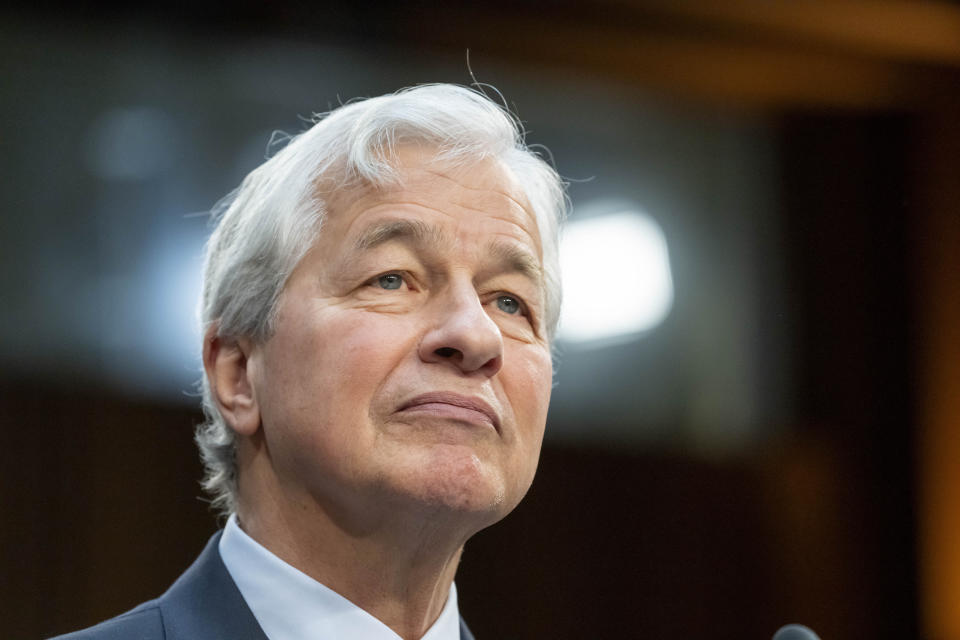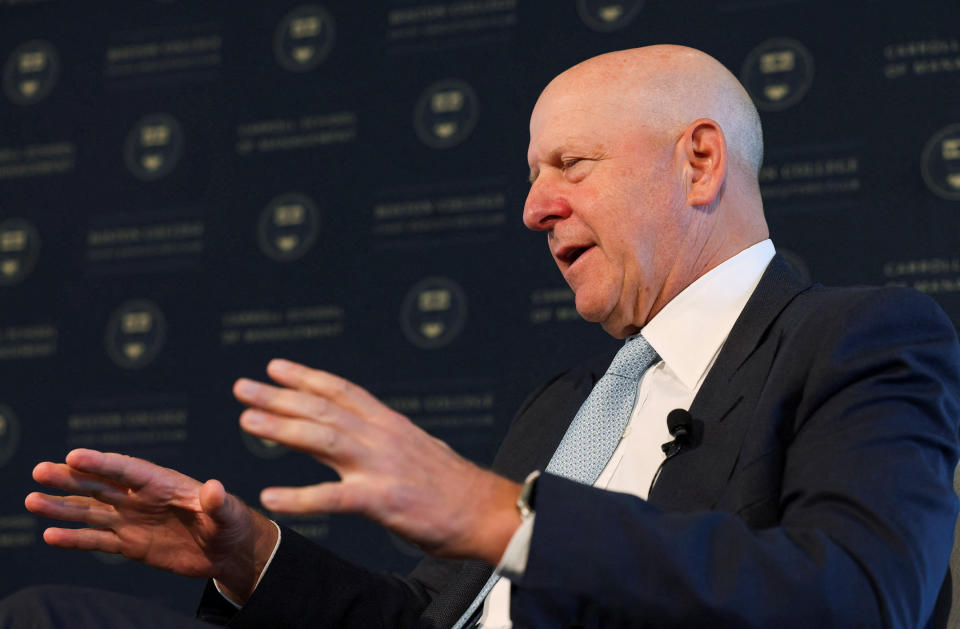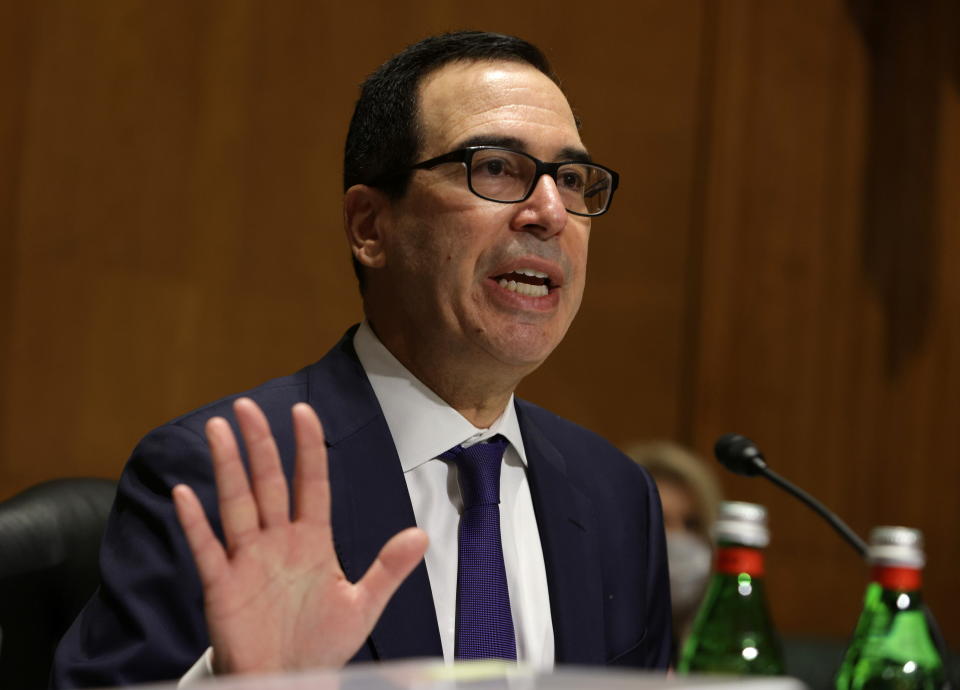Big bank stocks are outperforming the rest of the S&P 500 (^GSPC) this year, and investor confidence is about to be tested.
JPMorgan Chase (JPM), Wells Fargo (WFC) and Citigroup (C) report their second-quarter results on Friday, marking the start of a new earnings season for the U.S. banking sector. Bank of America (BAC) will report its results the following Tuesday.
Shares of those banks — the four largest in the U.S. — have each climbed more than 20% since January, outperforming the S&P 500. That performance is also about double the gains of an index that tracks the broader sector, the KBW Nasdaq Bank Index (^BKX).
Investors in big banks are optimistic about the ability of the largest financial institutions to thrive as the Federal Reserve slowly lowers interest rates, regulators water down a set of new rules on bank capital and Wall Street trading returns.
The Fed’s policy, which is currently expected to amount to one or two rate cuts in 2024, followed by more in 2025, “bodes very well” for the big bank group over the next year, said Gerard Cassidy, a banking analyst at RBC Capital Markets.
Learn more: What the Fed’s Interest Rate Decision Means for Bank Accounts, CDs, Loans and Credit Cards
But the actual results of the big banks in the second quarter should not surprise, despite JPMorgan’s headline numbers that are expected to eclipse all of its competitors.
JPMorgan is expected to report a hefty net profit, thanks in part to a multibillion-dollar pretax accounting boost from a stock swap in credit card giant Visa (V), but analysts say it won’t attract much attention from market watchers.
“I think the market is going to pretty quickly dismiss this as some sort of unusual or one-off event,” said Scott Siefers, a major bank analyst at Piper Sandler.
More focus will likely be on what JPMorgan has to say about a key measure of loan profit, known as net interest income.


That profit, which measures the difference between what banks pay out in deposits and what they earn on their loans, is expected to be down from the previous quarter. The same is true for the other three big banks.
Even the biggest banks are struggling to accept the move, as deposit costs remain high, demand for loans remains weak and the Fed is taking longer than expected to bring interest rates back down.
“Investors are hoping that second-quarter net interest income will, ideally, be the low point for the big banks this year,” Siefers added.
The results from big banks are also likely to reveal how cautious these lenders are about credit as higher rates pose more challenges for their borrowers.
New provisions set aside to cover future loan losses at the Big Four banks are expected to rise 26% from last quarter. By comparison, the pace of loan-loss provisions at all commercial banks began to level off earlier this year, rising 0.30% in the quarter, according to Federal Reserve data.
Results are expected to be considerably brighter in the Wall Street operations of these big banks, as trading operations stage a comeback after poor performances in 2023 and 2022.
The Big Four banks, along with Wall Street specialists Goldman Sachs (GS) and Morgan Stanley (MS), are all expected to post significant increases – on average more than 30% – in their investment banking fees compared with last year. Goldman and Morgan Stanley will report results on Monday and Tuesday.


The big event all banks are waiting for is when the Fed finally decides to start cutting rates, which are at their highest level in 23 years. The market is currently betting that this could happen as early as September.
For smaller regional banks, the sooner the rate cuts come, the better. They are more reliant on loan income and have therefore been hit harder by the decline in net interest income across the sector. They are also more exposed to weaknesses in the commercial real estate market.
This year, investors have pushed down shares of several regional and smaller banks as new problems or concerns arose.
This came last week after Dallas-based bank First Foundation (FFWM) announced a $228 million infusion from new investors to help it reduce its concentration on multifamily apartment loans.
This also happened in June, following an analyst report slamming the debt held by Bank OZK (OZK), and in May, when a short seller targeted Axos Financial (AX) because of the quality of its real estate loans.
Commercial real estate concerns began to surface earlier this year when New York Community Bancorp (NYCB) set aside a surprising amount of money to cover loan losses, partly related to rent-regulated apartment complexes in the New York City area.
NYCB shares fell, but the company was able to calm the market thanks to an emergency injection of capital from a group including former Treasury Secretary Steven Mnuchin.


All the turbulence has “dimmed investor expectations” for regional banks, said Bank of America analyst Ebrahim Poonawala.
Investors will be watching for new vulnerabilities, as many mid-sized institutions will make clear in the coming weeks.
For these lenders, “the best-case scenario is that their actual credit losses will be significantly lower than what’s built into their stock,” Chris McGratty, regional banking analyst at KBW, told Yahoo Finance.
But institutions that rely heavily on commercial real estate lending likely won’t get the benefit of the doubt until the credit cycle comes full circle, McGratty added.
The index tracking the share prices of regional banks (KRE) has fallen by more than 7% since the beginning of the year.
David Hollerith is a senior reporter for Yahoo Finance covering banking, crypto, and other areas of finance.
Click here for in-depth analysis of the latest stock market news and events moving stock prices.
Read the latest financial and business news from Yahoo Finance